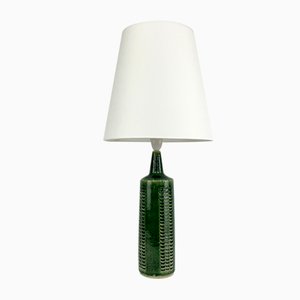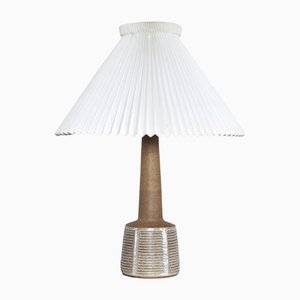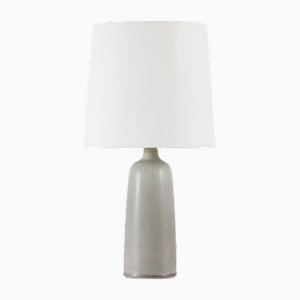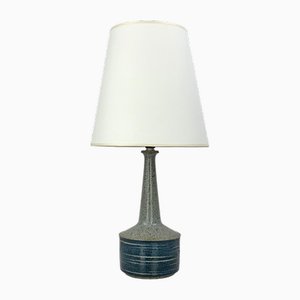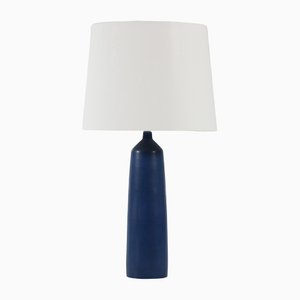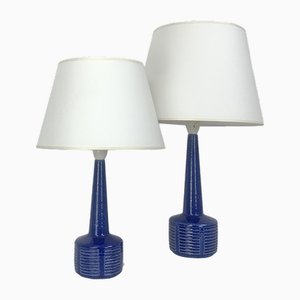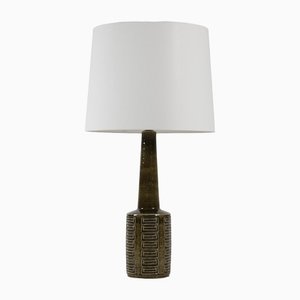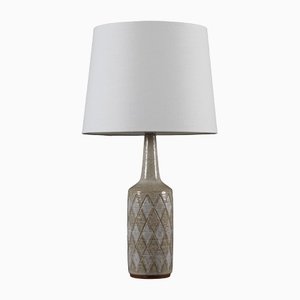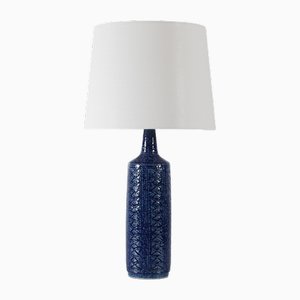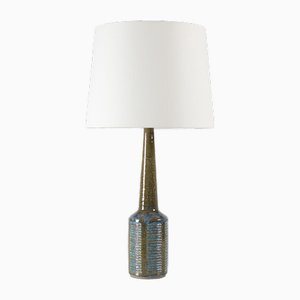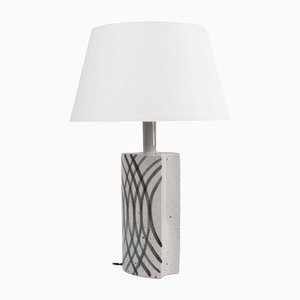
Danish sculptor and ceramic artist Per Ingvard Henrik Wulff Linnemann-Schmidt was born in 1912 in Copenhagen. Son of the Danish sculptor Willie Wulff (1881-1962), he later took his stepfather’s surname, Schmidt. In 1931, Linnemann-Schmidt began studying at the Royal Academy of Art in Copenhagen, where he honed his skills as a draftsman in life and figure drawing, and as a sculptor in clay plaster and bronze. During the 1930s and ‘40s, he specialized in portrait sculptures, and was commissioned by many private clients.
In 1949, together with his wife Annelise Linnemann-Schmidt (née Sprechler, 1918-1969), the pair established Palshus Stentøj (Stoneware) in Sengeløse, located outside of Copenhagen. The name Palshus was a combination of both of their initals with the addition of the Danish word for house, Hus. Linnemann-Schmidt designed and created the pieces which included tableware , vases , and lamps , while his wife ran the company. Their pieces were sold in the department store Den Permanente in Copenhagen. Per was self taught in glazing techniques and perfected the beautiful matte "Haresfur" glazes. Colors were characteristic Scandinavian earthy tones: blues, browns, and beige. Many talented ceramic artists also worked for Palhus including Jens H. Quistgaard;Kjeld Jordan, who specialized in animal and bird figures; sculptor Billy Eberlein; and the Cuban-American Hugo de Soto, who created chess pieces for Pahus in addition to his own abstract art.
Palhus struggled after being accused of plagiarizing designs by fellow Danish ceramics factory Saxbo in the late 1950s. Following the suddent death of Annelise in 1969, Linneman-Schmidt closed Palhus for good in 1972. He returned to his first vocation as an artist: drawing, painting, and sculpting. a number of pieces before passing away in 1999.


